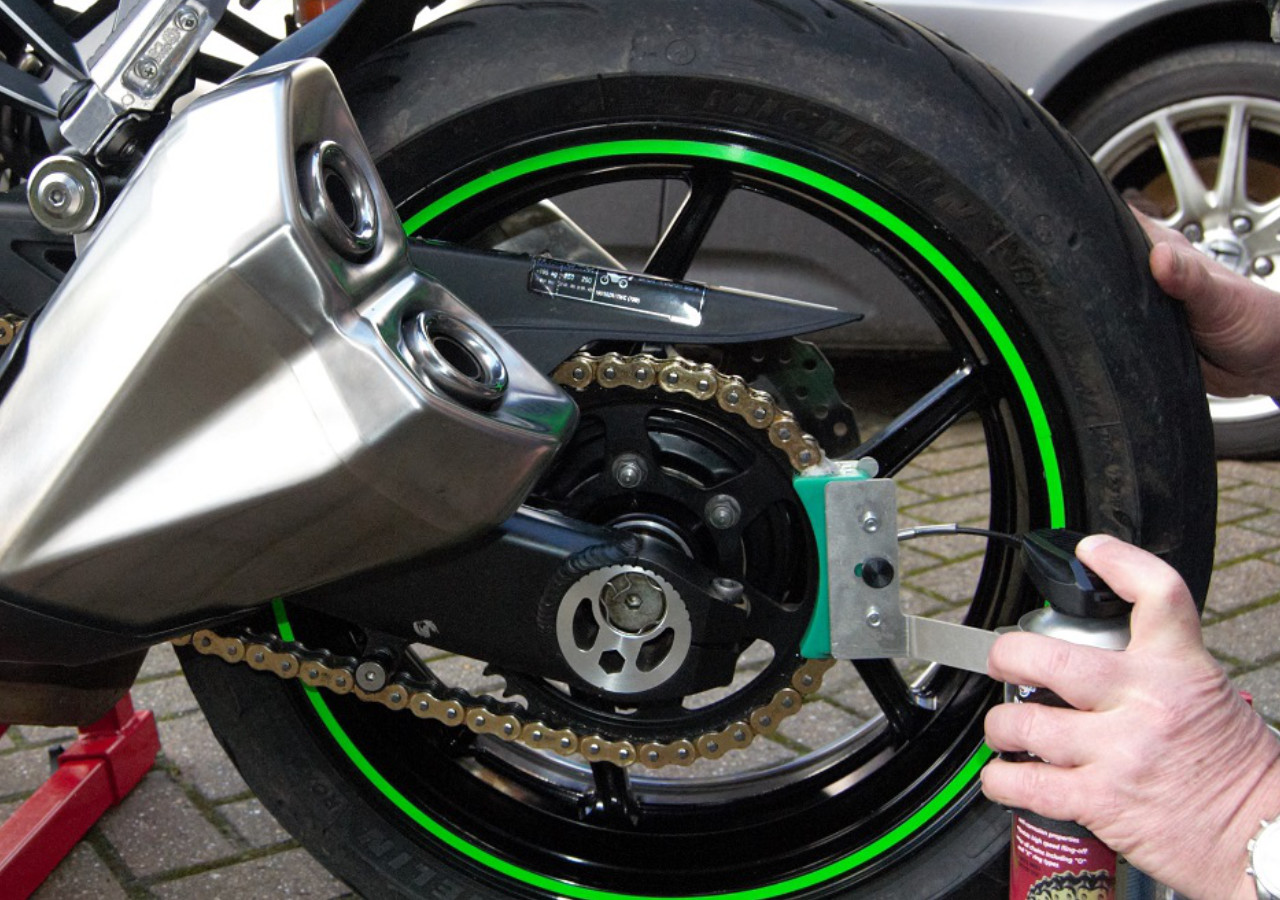
- Step 1: Preparing the Motorcycle for Storage
- Step 2: Protecting the Engine and Fuel
- Step 3: Battery and Electrical System
- Step 4: Preserving Mechanical Parts
- Step 5: Secure Storage
- Step 6: Specific Motorcycle Storage Tips (Optional)
- Step 7: Managing Insurance and Registration
When the cold arrives, storing a motorcycle is essential to effectively protect it from damage and maximize its lifespan, while also saving on registration and insurance. Discover our 7-step guide for storage!
Getting hands-on with the engine can be daunting if you’re not used to it. To ensure everything is done correctly, call on our professionals in Sherbrooke.
Step 1: Preparing the Motorcycle for Storage
1. Thorough Cleaning
A deep clean is the foundation of any good storage. Arm yourself with a motorcycle shampoo and specialized cleaners to dislodge all dirt without damaging the parts.
Avoid high-pressure jets and clean the motorcycle when cold, as metal parts expand with heat. Take the time to dry it, ideally with a microfiber cloth.
2. General Inspection
Once everything is clean, it’s time to inspect: check tire condition, test brakes, check chain tension, and fluid levels (brakes and coolant). If components show signs of wear, replace them before storing the motorcycle for winter.
Step 2: Protecting the Engine and Fuel
Fuel Treatment
The treatment will depend on your engine type. Owners of fuel-injected motorcycles should fill up before storage. First, add a stabilizer to avoid moisture accumulation.
For carburetor motorcycles, do the opposite: empty the tank and purge the circuits to prevent deposit formation.
Internal Lubrication
For prolonged storage, adding a thin layer of engine oil in the cylinders provides excellent rust protection for the internal walls.
Optional Oil Change
If your last oil change was a few months ago, do it before winter. If it’s recent, you can skip this step, but plan it for your first outings in spring.

Step 3: Battery and Electrical System
Disconnection and Storage
In winter, your motorcycle battery requires special attention: remove it and store it in a dry, temperate place. A smart charger with a maintenance mode is your best ally to prevent it from failing. Otherwise, remember to recharge it regularly.
Cables and Connections
Take this time to clean the battery terminals and inspect electrical cables. A little maintenance can prevent major issues!
Step 4: Preserving Mechanical Parts
Greasing Joints and Chain
Go over all exposed joints (kickstand, footpegs) and grease the chain well. WD-40 or high-performance grease will work wonders.

Exposed Metal Parts
Metal elements are particularly vulnerable to corrosion; to protect them, apply an anti-corrosion spray.
Step 5: Secure Storage
Ideal Location
How to properly winterize a motorcycle? It starts with choosing the location: select a dry, ventilated place sheltered from the elements, like a garage or enclosed shelter. Use a breathable cover, which will help avoid contact with moisture and dust.

Avoid Tire Deformation
Elevate the motorcycle with a center stand or shop stands. If that’s not possible, move it slightly every 2 to 3 weeks to avoid keeping pressure in the same spot on the tires.
Step 6: Specific Motorcycle Storage Tips (Optional)
Motorcycles Parked Outdoors
Though not ideal, outdoor motorcycle parking in winter is possible. Ensure using waterproof covers with cotton lining and wind protection.
Extended Winter Storage Over 4 Months
Beyond 4 months, consider removing spark plugs and periodically rotating the engine. And for storing a motorcycle for more than a year? Ensure a complete oil change, intensive greasing, and apply reinforced corrosion protection.
Step 7: Managing Insurance and Registration
Reducing Insurance Costs
It’s sometimes possible to switch to minimal liability insurance or suspend collision coverage during the cold season. Check your options with your insurer to save! Note: keep theft coverage unless your motorcycle is in a highly secure location.
Registration and Refund
When storing your motorcycle, you may be entitled to a registration fee refund, depending on where you live. To do this, suspend the registration by contacting the SAAQ and completing the necessary documents. Always keep proof of suspension.
In summary, properly storing a motorcycle helps preserve its overall condition and can avoid unexpected costs during a pre-sale inspection. You’ll also avoid unpleasant surprises in spring!
Have doubts about certain procedures? Our team in Estrie, near Magog and Orford, takes care of the entire process with expertise. Make an appointment!
